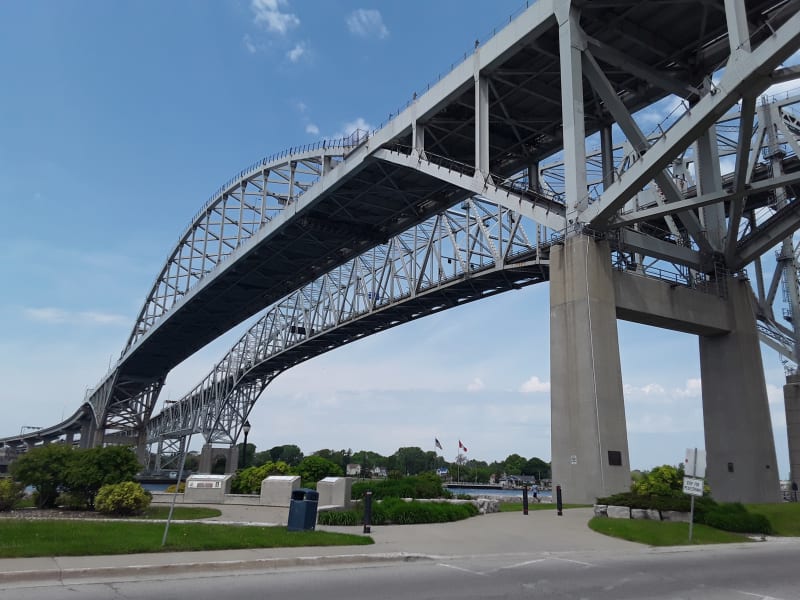tmalik3156
Structural
Good day all.
I was looking at the beautiful Bluewater International Bridge between Michigan and Ontario over St. Claire River. It's a twin bridge. The one shown on the near side of the photo is a tied arch bridge with continuous spans.

I was wondering how the structural system works. We know, in a tied-arch bridge the deck in tension counteracts the horizontal component of the arch in compression at point A. I tried to draw a sketch of tension (green) and compression (red). But I am getting a bit confused about the part AB (shown in yellow). Is this in tension as well? How do the forces act if we draw free body diagram at joints A and B?

I was looking at the beautiful Bluewater International Bridge between Michigan and Ontario over St. Claire River. It's a twin bridge. The one shown on the near side of the photo is a tied arch bridge with continuous spans.

I was wondering how the structural system works. We know, in a tied-arch bridge the deck in tension counteracts the horizontal component of the arch in compression at point A. I tried to draw a sketch of tension (green) and compression (red). But I am getting a bit confused about the part AB (shown in yellow). Is this in tension as well? How do the forces act if we draw free body diagram at joints A and B?

